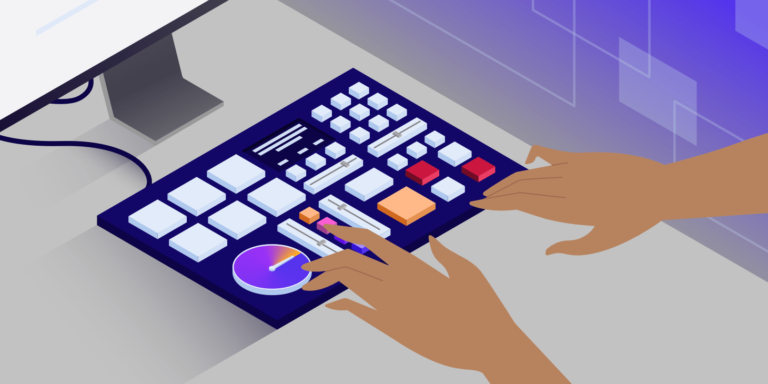Here is a rewritten version of the article that maintains the original meaning while enhancing clarity and flow:
—
🗓 April 11, 2025
✍️ By Matleena Salminen
🌐 Image: Hostinger Horizons
—
Vibe Coding: A New Way to Build Apps with AI
Vibe coding is quickly becoming a favorite approach among indie developers and creators experimenting with AI-powered tools. It’s fast, intuitive, and creative—but also a little unpredictable.
The term gained traction after a post by Andrej Karpathy on X (formerly Twitter), where he described vibe coding as:
“You just vibe with the AI. Prompt, get code, run it, see what breaks, try again, edit a bit, paste it in, iterate. You don’t need a spec. The spec is in your head. You just build.”
Let’s explore what vibe coding is, how it works, and why so many creators are embracing this unconventional method.
—
What Is Vibe Coding?
Vibe coding is a rapid, AI-assisted way to create software without a detailed plan or deep programming knowledge. Instead of writing code line by line, you describe what you want in plain language. The AI generates code based on your prompts, and you test and refine it through quick iterations.
There’s no strict roadmap—just a continuous loop of experimentation, feedback, and improvement.
—
How Vibe Coding Differs from Traditional Coding
Traditional coding involves a structured process: planning, writing, testing, and maintaining code using languages like Python, Java, or C++. It requires technical expertise and attention to detail.
In contrast, vibe coding lets you skip the technicalities. You describe what you want, and the AI writes the code. It’s ideal for quick prototypes or simple tools but not recommended for complex, mission-critical applications.
Want a deep dive? Check out our guide comparing vibe coding and traditional development.
—
Benefits of Vibe Coding
Why is vibe coding gaining popularity? Here are some of its biggest advantages:
– 🚀 Speed – Skip setup and boilerplate code.
– 🎨 Creativity – Discover new ideas through AI-generated suggestions.
– 🧩 Accessibility – No need for advanced coding skills.
– 🔁 Flexibility – Easily pivot or refine your project.
– 🧪 Great for Prototyping – Quickly test and validate ideas.
—
Is Vibe Coding Secure?
AI-generated code can introduce potential vulnerabilities. To keep your projects safe:
– Carefully review all generated code.
– Avoid deploying vibe-coded apps to production without proper audits.
– Test in sandbox environments.
– Sanitize inputs and handle errors securely.
—
How Vibe Coding Works
Vibe coding relies on natural language prompts and AI-generated results. You describe your idea, the AI writes the code, and you iterate until it works.
There are two main approaches:
1. 🧠 All-in-One Platforms (e.g., Hostinger Horizons)
These tools let you build full applications without seeing the code. Just describe your app (e.g., “a calendar booking tool”), and the platform generates the front and back end for you.
2. 💻 AI Coding Assistants (e.g., ChatGPT, GitHub Copilot)
These tools offer more control. You prompt the AI with specific tasks (like “create a login form in Flask”), receive code snippets, and test or refine them manually.
Typical vibe coding workflow:
– Prompt the AI.
– Review and run the code.
– Debug and refine using follow-up prompts.
– Repeat until satisfied.
Many platforms also include chat-based IDEs, one-click testing, and built-in deployment tools to streamline the process.
—
Real-World Examples
Vibe coding is being used in a variety of creative ways:
– A podcaster builds an AI tool to clip audio highlights.
– A creator sets up a form that sends data to Notion.
– A freelancer designs a chatbot to handle client FAQs.
These projects may not be perfect, but they get the job done—fast.
—
Best Practices for Vibe Coding
To get the most out of vibe coding:
– ✏️ Keep prompts short and clear.
– 🧪 Test in small increments.
– 📊 Use real-world examples to guide the AI.
– 🔄 Don’t be afraid to start over if things get messy.
– 💾 Save working versions before making changes.
—
Why Vibe Coding Matters for Creators
Vibe coding opens the door for creators to build functional apps without needing a full development team. It’s especially useful for:
– ⚡ Rapid Prototyping – Build and test ideas quickly.
– 🛠️ Solving Personal Problems – Automate tasks or workflows.
– 🎯 Low-Stakes Experimentation – Try new things without fear of breaking production systems.
– 🚪 Lower Barriers – No coding background required.
– 🧠 Creative Control



